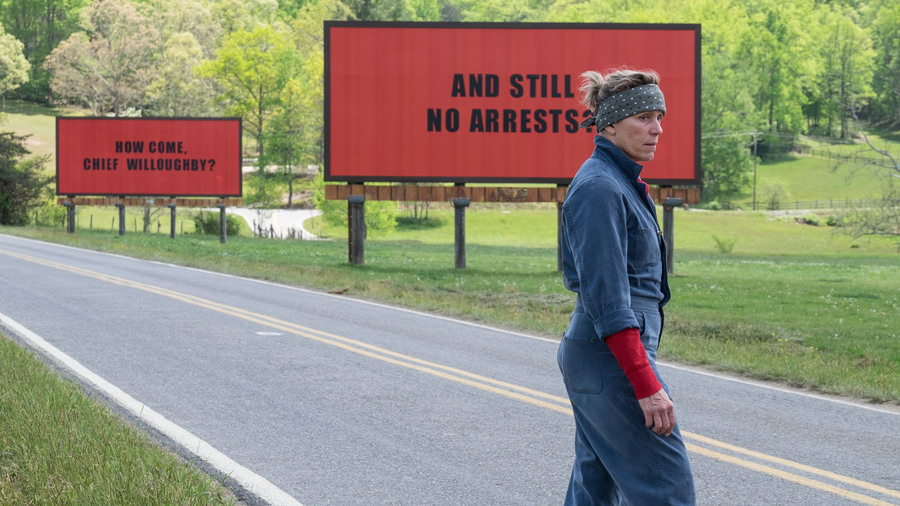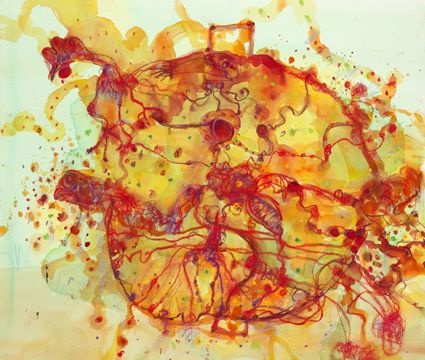by: Geoffrey Golia
ATM’s Thrones’ Guru attempts to quell a grief far too near following an episode aptly titled “The Door”…

While not as anticipated as some of the previous “very special episodes” of Game of Thrones (I’m thinking, of course, of “The Rains of Castamere, known colloquially as “The Red Wedding”), “The Door” proved to be just as climactic, traumatic, and haunting. And while I must press on, in many ways, to quote Legolas of the Woodland Realm, “the grief is just too near.”
ATM: Hodor. Hold the door. We are nearly speechless. His entire life was fated for just this one moment. Wow.
G.G.: There was something truly disarming about this sequence for me, starting with Summer’s ultimate sacrifice and ending with Hodor’s. I generally can’t handle the death of lovable giants or canines in media, let alone the Westerosi manifestation of the BFG and a quasi-supernatural direwolf. Hodor was a loveable figure and provided some necessary comic relief in a series that tends to highlight the full scope of human misery in graphic detail.
So what do these sacrifices mean? If the White Walkers are major players in an apocalyptic end-game, and the Night’s King himself felt strongly enough to go after Bran personally, these sacrifices are evidence of Bran’s own role in the conflict. Clearly, all involved in this sequence understood this….
And it does seem like this selfless act was the culmination of Hodor’s life, though it’s hard for me to think of it as one he took on freely given the fact that Bran had skin-changed into him. At least, I think it was Bran, because it was Meera, wasn’t it, who was yelling “hold the door?”
Though it is a little pathetic to admit as the Song of Ice and Fire context-guy, I really can’t say exactly what was going on with respect to the mechanics of greensight, skinchanging, etc. in these scenes. Does this nullify Hodor’s sacrifice? Ultimately, I don’t think so.
ATM: Meera threw a spear at a White Walker within all the madness and that White Walker shattered into pieces? Was the spear tipped with dragonglass? Is there something special about Meera? I hope so, as her and Bran are now alone in the wilderness together.
G.G: My interpretation was that the spear was tipped with obsidian, also known as dragonglass, which we know, along with Valyrian steel, can kill White Walkers.
I have a pretty big crush on Meera, and I’d be happy to discuss why I think she is special, and perhaps what “special significance” she may have on a larger scale. Meera is a crannogman (crannog woman? crannogperson?) from House Reed in the Neck. While House Reed is a Northern House, they hail from the more temperate marshes that separate the Riverlands from the North. Folk from the Neck are known for living close to the land, utilizing the terrain to evade enemies, and their small stature. Crannogmen are amongst the most resourceful and loyal people-groups in Westeros, and Meera is an excellent example. Additionally, Meera is an accomplished hunter and extremely self-sufficient. She is brave, smart, and committed to her brother while he was alive, the Starks, and Bran’s journey.
As for her special significance, it’s now Meera and Bran alone in a hostile, wintery wilderness. She is literally all he has right now. His survival, at least to the extent that he has more to do (and I think we can agree that he has more to do), is dependent on her skills and commitment to Bran and his mission. It might seem corny, but I haven’t ruled out a potential romantic relationship. Before the generation of Robert’s Rebellion, regional Lords and Ladies, like the Starks, tended to marry among their bannermen, to shore up fealty and relational bonds. Given the special relationship between the Reeds and the Starks (remember who saved Ned’s life at the Tower of Joy), and given how fucking awesome Meera is, I’d be very disappointed if, given her consent of course, Bran didn’t seek to tie the knot.

ATM: Are the Children of the Forest responsible for making the White Walkers in the books? How does that all work? Why did they create them in the first place….”to protect ourselves, from you….from men.” to quote the Children. Sounds like the children of the natural world were fighting back against the scourge upon the Earth that is humanity – a very apropos parallel to many of the issues facing our world today!
G.G.: No. The books definitively don’t explain where the White Walkers come from. Various theories are presented by different characters, but like many mysteries in the series, we probably will never know the whole truth. But other facts in the books can lead us to state with confidence that the Children had nothing to do with their creation. Still, themes of human disservice to nature – and colonizing and victimizing indigenous peoples – are present in both the book and the television narratives. Allow me to explain from the book’s perspective.
Many, many years ago, Westeros was populated by the Children of the Forest: diminutive and magical creatures who lived in harmony with the natural world, utilizing weirwood trees and greensight to communicate across the vast continent (There were also giants in those days). According to legend, this harmonious existence was shattered 12,000 years before the events of the series by the coming of the First Men across the Arm of Dorne into Westeros. This land bridge once connected Dorne to Essos. The First Men, who represent, in many respects, the human desire to subdue nature, came into violent conflict with the Children. For the next two millennia, the First Men and Children fought a near-constant war for Westeros. This war resulted in massive geological changes to the continent as the Children utilized magic to, among other things, smash the Arm of Dorne, creating the Stepstones.
After 2,000 years, the two parties realized the futility of their conflict and, on the Isle of Faces in the Riverland, agreed to a non-aggression pact wherein the First Men would continue to reside in the open lands and the Children would live in the forests. A fragile peace persisted for nearly 5,000 years until the coming of the White Walkers during the Long Night. The Children and the First Men teamed up, lead by “The Last Hero” (Azor Ahai? The Prince that was Promised?), and ostensibly defeated the White Walkers. It was around the time of this conflict that the Night’s Watch was established and, given that the initial purpose was to protect the realms of men from the White Walkers, the remaining Children of the Forest would donate obsidian weapons to the Watch on an annual basis.
Eventually, with the coming of the Andal’s and the establishment of the pseudo-feudal system, the Children faded into obscurity and then into myth.
As I eluded to before, the children represent both the importance of harmony with nature (as represented, in the series, by the destruction of the natural world through human folly and, in real life, by the destruction of natural resources through industry and modernity) and the colonization and genocide of indigenous people (it’s hard to ignore the ways in which the Children represent an albeit problematic representation of various native and First Nations peoples). This is one of Martin’s many not-so-subtle metaphors throughout the series.

ATM: Euron Greyjoy is an absolute boss in a debate. And with that we have a new King of the Ironborn. But his niece and nephew, Theon and Yara, will not go quietly into that good night. This civil war is surely going to make it tough for Euron to make good on his promise to give his people “this world.” No?
G.G.: I think Yara and Theon are in a difficult position, as they lack sufficient numbers and allies to effectively counter Euron’s authority and support. Think about it: the Ironborn are generally disliked by other Westerosi (the words of House Codd are, after all, “Though All Men Do Despise Us”), and Theon and Yara have alienated both the Starks and the Boltons. So, unless the showrunners can effectively sell some kind of grand, conciliatory gesture on the part of Theon and Yara (like, I don’t know, some kind of human sacrifice or marriage alliance, maybe), I don’t know who the Greyjoy kids can turn to and what they can effectively accomplish.
As for Euron’s grand plan, I think he’s making a huge miscalculation by thinking he can woo Dany, especially given his lack of subtlety. And I feel strongly that this venture will end in ‘fire and blood’. Another issue is this: it is strongly indicated in the books that sources of timber for shipbuilding are scarce on the Iron Isles; obviously this is being ignored in the show.
ATM: Who was that sultry priestess who came to visit Tyrion and Varys? That necklace certainly looked familiar!
G.G.: Kinvara is the High Priestess of the Red Temple of Volantis, which is a city in Essos. She doesn’t, to my recollection, appear in the books, but it’s clear she’s “a pretty big deal” in the cult of R’hllor and Volantene politics. And, yes, that necklace should look familiar; in the books, Melisandre always wears a necklace with a ruby, which often pulsates during moments of magical significance. It looks like the showrunners are making this a standard vestment for red priestesses, a la the Roman collar for Catholic priests. While Melisandre’s latest prophetic failures have demonstrated the fallibility of the cult (which I believe, makes it slightly less mendacious), I am suspicious of Kinvara’s intentions, as her aims must, inevitably, come into conflict with Dany’s….not that I’ve chosen sides!





